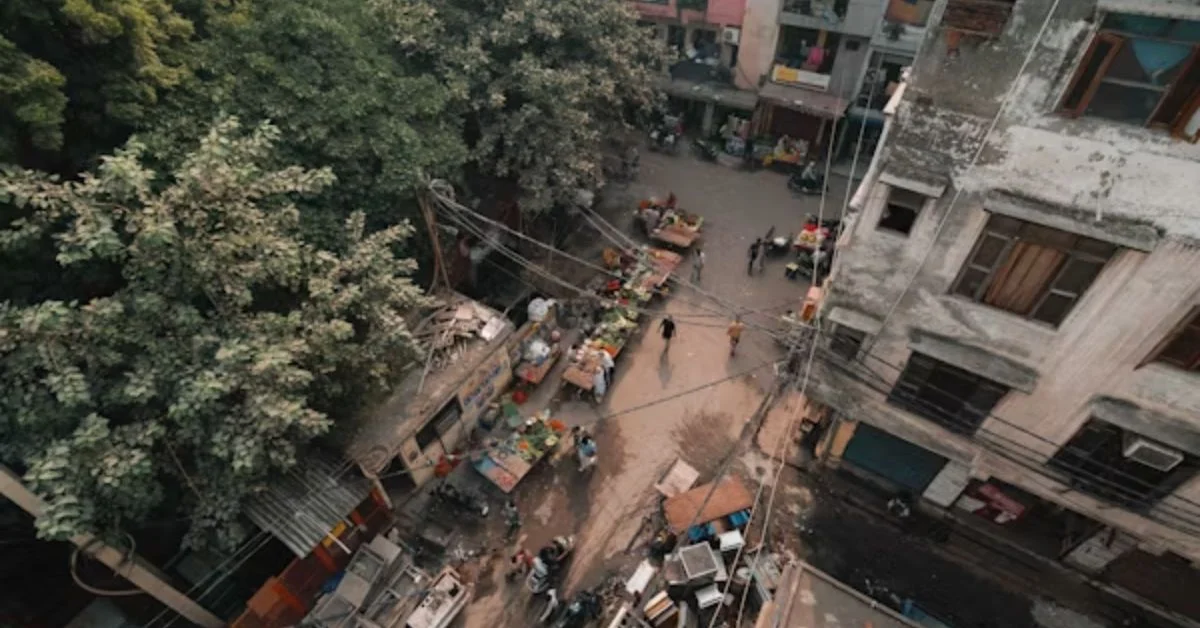Tucked into the dense urban grid of North Kolkata, Sukea Street may not appear prominently on a tourist map, yet for locals, historians, and cultural observers, it remains an essential artery. Known for its colonial-era buildings, traditional Bengali households, bustling shops, and layered history, Sukea Street captures something quintessential about the evolution of Kolkata itself.
So what is Sukea Street? At its most basic, it’s a residential and commercial road connecting various parts of North Kolkata. But for those who walk its lanes, study its architecture, or live within its bounds, Sukea Street is much more than a geographic location—it’s a living microcosm of Bengali heritage, layered with stories of migration, trade, religious harmony, and shifting urban dynamics.
This article is a deep dive into Sukea Street, offering historical insight, architectural appreciation, community perspectives, and a sense of the evolving role this street plays in Kolkata’s social and cultural narrative.
Where is Sukea Street Located?
Sukea Street is located in North Kolkata, close to prominent localities like Beadon Street, Bidhan Sarani, and Shyambazar. It falls under the jurisdiction of the Kolkata Municipal Corporation (KMC) and is primarily part of Ward 24. The nearest metro stations are Shobhabazar Sutanuti and Girish Park, making the street accessible via public transit.
Despite its modest length and width, Sukea Street connects important cultural and residential nodes in the city. It’s a place where history walks hand in hand with the present—where sweet shops coexist with medical stores, and 100-year-old houses stand beside newly constructed apartment buildings.
The Origin of the Name: Why “Sukea”?
The etymology of “Sukea” is debated among scholars and residents. The most accepted theory suggests that “Sukea” may be a phonetic distortion or anglicization of a Bengali or even Persian-origin word.
Some believe that it might be derived from “Sukhya,” meaning happiness or prosperity in Bengali—a reference to the wealthier families who lived in this part of the city during the 19th century. Others trace possible roots in trading communities or family names lost over time. Like many old Kolkata streets, the precise origin is murky but adds to the charm and mystique of the area.
Colonial Legacy and Urban Planning
During the British Raj, Sukea Street developed as part of the broader urbanization of North Kolkata, which was the city’s cultural and residential center before development spread southwards.
North Kolkata was characterized by:
- Narrow, maze-like lanes
- “Bari-bari culture”—rows of large joint-family homes
- Temples at street corners
- Bastis (lower-income housing) beside aristocratic residences
- Close proximity to markets and educational institutions
Sukea Street evolved within this ecosystem. Several buildings still retain European architectural influences, including arched porticos, cast-iron railings, and high ceilings, often tucked behind newer facades. While the city has moved toward modernity, the old-world character of Sukea Street endures in many pockets.
Life on Sukea Street Today
Residential Landscape
Sukea Street today is a blend of generational Bengali families, migrant workers, and newly settled middle-class professionals. Many residents live in multi-story buildings that have grown vertically over time—some converted from old mansions, others newly constructed.
A unique feature is how old Kolkata’s communal lifestyle persists:
- Shared terraces used for drying clothes or evening chats
- Neighborhood clubs (paras) where local boys play carrom or cricket
- Common puja celebrations in shared courtyards
Despite increasing real estate value and gentrification, Sukea Street has managed to retain its essence of warmth and familiarity.
Commercial Activity
The street features a lively mix of businesses:
- Sweet shops and snack stalls selling kachoris, singaras, and sandesh
- Medical stores, some of which have been family-run for generations
- Clothing boutiques and tailoring shops
- Grocery stores and fish markets that reflect Bengali culinary habits
Several bookbinding and printing units are tucked away in the by-lanes, a nod to the city’s long association with publishing and literature.
Culture and Religion: A Street of Shared Spaces
One of the most beautiful aspects of Sukea Street is its religious and cultural harmony. Walking through, you’ll encounter:
- Temples, often over 100 years old, dedicated to deities like Kali, Shiva, or Durga
- Mosques, such as small prayer halls used by the local Muslim community
- Puja pandals, which spring to life during Durga Puja, complete with local participation and thematic artistry
During Muharram or Eid, neighbors exchange sweets and visit one another’s homes, just as they do during Saraswati Puja or Lakshmi Puja. This co-existence is not just symbolic—it’s lived and celebrated.
Sukea Street’s Role in Modern Kolkata
While Sukea Street may not have tech parks or glass skyscrapers, it plays a critical role in maintaining the city’s emotional and cultural equilibrium. Here’s how:
1. Preserving Urban Memory
Sukea Street is home to heritage buildings and traditional households that preserve customs lost in faster-moving parts of the city. Elderly residents often become informal historians, recalling stories of freedom fighters, Partition, and pre-Independence life.
2. Supporting Small Economies
From barbers to locksmiths, from milkmen to domestic helpers, the informal economy thrives here. Many local workers rely on word-of-mouth rather than digital listings.
3. Education and Aspiration
Several tuition centers and small coaching institutes dot the area, helping students prepare for board exams or government job tests—feeding the city’s aspirational middle-class dreams.
Challenges Faced by Sukea Street
Despite its charm, Sukea Street is not without its difficulties:
Urban Decay
Many old buildings are in poor condition. Landlords struggle with maintenance due to legal disputes over tenancy and rent control, a problem common across North Kolkata.
Waterlogging and Sanitation
During monsoons, the street suffers from drainage issues, often causing minor flooding. Waste management remains inconsistent, particularly in the back lanes.
Gentrification Pressure
Rising land prices have led to a push for redevelopment, which risks wiping out architectural and social history unless done sensitively.
Notable Landmarks and Hidden Gems
Though Sukea Street lacks formal tourist attractions, local highlights include:
- Old Temples with terracotta art and marble interiors
- Century-old Sweet Shops serving rare items like pantua, kheer kodom, and misti doi
- Street Libraries where locals exchange used books
- Baithaks or music rooms, especially in older homes that hosted classical performances
Locals can point you to homes with secret courtyards or underground wells, reminders of the city’s pre-modern utilities and community living.
Sukea Street in Literature and Pop Culture
North Kolkata, including areas like Sukea Street, has been the setting for many Bengali novels and films. The street’s ambiance—echoing voices, temple bells, the scent of mustard oil and incense—captures the essence of countless Satyajit Ray scenes or Bibhutibhushan Bandopadhyay chapters.
While Sukea Street may not be name-checked often, it symbolizes the “para” (neighborhood) that writers use to represent the old Kolkata spirit: nostalgic, political, vibrant, and deeply human.
Conclusion
In a city as complex as Kolkata, every street tells a story—but Sukea Street tells many. It is not just a corridor for foot traffic or rickshaws; it is a moving theatre of tradition, resilience, and subtle transformation. As real estate shifts, generational homes evolve, and digital life encroaches on analog rhythms, Sukea Street endures.
It may not ask for your attention, but it rewards your curiosity. Visit it with patience, and you’ll find not just buildings and shops—but stories, heritage, and a sense of belonging that’s becoming rare in the modern urban sprawl.
FAQs
1. Where exactly is Sukea Street located in Kolkata?
Sukea Street is situated in North Kolkata, near Beadon Street and Bidhan Sarani. It is accessible via the Shobhabazar Sutanuti or Girish Park metro stations.
2. Is Sukea Street a residential or commercial area?
It is a mix of both. The street includes family homes, apartments, and a wide range of small businesses like sweet shops, medical stores, and tailoring units.
3. Are there any historical landmarks on Sukea Street?
Yes, several old temples and buildings over 100 years old still stand. Some homes feature colonial architecture and traditional Bengali interiors.
4. Is Sukea Street safe for visitors and tourists?
Yes, Sukea Street is considered safe. It’s a vibrant neighborhood with a strong local community, although it is not a formal tourist zone.
5. Why is Sukea Street culturally important?
Sukea Street reflects the broader history of Kolkata—from colonial roots to modern challenges. It’s a space where community life, heritage, and shared culture still flourish.
For more information, click here.









